 Rice
Rice
Rice – beloved of many, preferred starch for billions of people – the basis for many diets. But now new warnings from Consumer Reports about arsenic being found in rice at levels that will affect your health. Thankfully it is not universal for all rice, but it is important to know which rice is safest.
What dieter didn’t try rice cakes, and what kids doesn’t like Rice Krispies treats? You diet- I will take the treats.
What is Arsenic?
Arsenic is a metalloid element – it is found on the periodic table (atomic number 33) in spite of arsenic being “natural” as humans evolved arsenic was always toxic and no amount is safe – it isn’t a matter of “a safe level” or a bit of it is ok- arsenic is toxic to people at all levels. What is worse is chronic exposure to arsenic (see below).
This, by the way, is not one of those warnings about “everything you eat is bad,” – this is a serious warning, one that you should heed if you love rice. If you don’t love rice you probably are an alien – and if you think it is bad for you than you are under the influence of the dead Dr. Atkins. Yes – rice is just fine, except for arsenic – that is not fine.
Back to arsenic – two basic types – both are bad- one is inorganic and one is organic (not the natural organic found in a health store, but organic as in chemistry – where it means associated with a carbon atom). Both are bad- inorganic binds to you and causes problems.
Arsenic is a natural compound found in nature and yet humans have managed to find a way to get more of it into our air and water supply. Many commercial pesticides have arsenic, and is a byproduct of agriculture. Arsenic is picked up readily by rice.
Why Is Arsenic Bad?
Low doses of chronic exposure to arsenic can cause skin, lung, and bladder cancer, and is associated with cancers of the kidneys, liver, and prostate. In addition, low doses have been associated with inflammation of the arteries and is thought to be a factor in heart disease. No level is safe – no level.
So what is the data?
Below information comes directly from Consumer Reports:
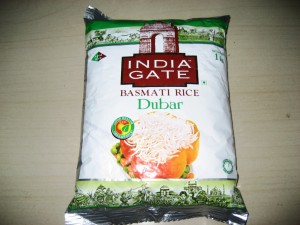
Basmati rice from India, Pakistan, or California have the lowest levels of arsenic.
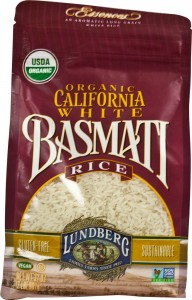
California basmati rice has among the lowest levels of arsenic.
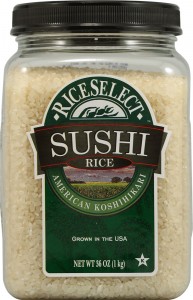
US grown sushi rice has some of the lowest arsenic levels and considered safe for consumers.
Because of the significantly lower levels of total inorganic arsenic, Consumer Reports revised their recommendations for consumption of basmati and sushi rices. Consumers can eat about 4.5 weekly servings, more than twice as much rice per week as previously recommended of basmati rice from India, Pakistan, or California, or sushi rice, and not increase lifetime population cancer risk. For other types of rice Consumer Reports still recommends two servings per week for adults and 11/4 servings per week for children. A serving size of rice is approximately 45 grams (1/4 cup) uncooked.
In general, rice labeled as ‘from the U.S.’ or ‘from Arkansas’, ‘Louisiana’, or ‘Texas’ tended to have the highest levels of total inorganic arsenic compared with rice from elsewhere.
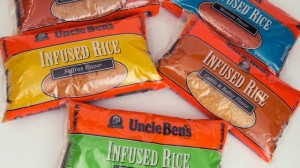
Uncle Ben’s rice is grown in Arkansas, Louisiana, and Texas – and have the highest levels of inorganic rice– not just Uncle Ben’s but all rice grown in this region. Uncle Ben’s had some rice recalled because of some illness in school children. They stated it was secondary to being contaminated with gluten- however, the symptoms also mimic some arsenic toxicity. Rice from this part of the US is high in arsenic.
Brown rice of a particular type always had higher levels of inorganic arsenic than white rice of the same type. But the origin of rice can also affect arsenic levels in addition to type. Brown basmati rices from India, Pakistan, or California are better choices for brown rice. Those brown rices have lower levels of inorganic arsenic than other brown rices from all other parts of the U.S.

Brown rice from California, India, Pakistan – all have lower levels of arsenic than rice from other parts of the country.
Alternative grains to rice such as amaranth, millet, and quinoa all have significantly less inorganic arsenic than rice.
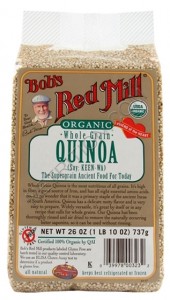
An alternative to rice is Quinoa and also Millet and Amaranth. Quinoa makes a great salad with Kale – low in arsenic and high in other good stuff.
Children (up to 70 pounds) should rarely eat hot rice cereals or rice pastas. Those products all had 95th percentile total inorganic arsenic levels that were above 9 micrograms per serving. (The 95th percentile is the value that 95 percent of the other observed values are below—so it is one of the highest values.)

Among the lowest levels of arsenic were found in this treat – which is good- especially since my son likes making those great bars
Limiting Exposure:
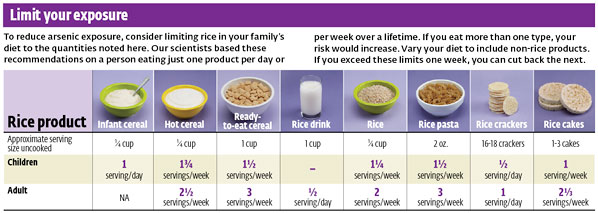
Shamelessly taken from Consumer Reports (credit now given)
Now for the Rice Producer Comments:
“There is no documented evidence of actual adverse health effects from exposure to arsenic in U.S.-grown rice,” says Anne Banville, a vice president at the USA Rice Federation, a trade association representing the $34 billion rice industry. “And we believe the health benefits of rice must be properly weighed against the risks of arsenic exposure, which we believe are minimal.” (this quote came from Consumer Reports reporting the other side of the issue).
Well- ok- just for kicks what happens if you ask a scientist, who isn’t paid by the rice industry?
“We already know that high concentrations of arsenic in drinking water result in the highest known toxic substance of disease risks from any environmental exposure,” says Allan Smith, M.D., Ph.D., a professor of epidemiology at the University of California, Berkeley. “So we should not be arguing to wait for years until we have results of epidemiologic studies at lower arsenic intake, such as from rice consumption, to take action.” His studies of arsenic in public water in Chile and Argentina helped show that it causes lung and bladder cancer and other diseases. (this quote is from Consumer Reports)
